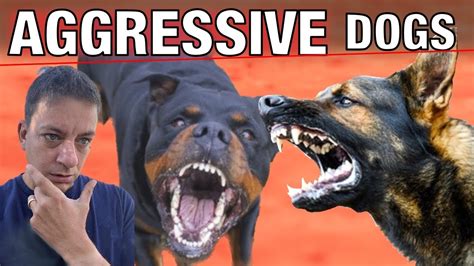Introduction
Dog aggression is a significant concern for both pet owners and society as a whole. According to the American Veterinary Medical Association (AVMA), approximately 50% of dogs exhibit some form of aggression during their lifetime. This behavior can range from mild to severe and can pose a threat to humans, other animals, and property.

Understanding Dog Aggression
Dog aggression can manifest itself in various ways, including:
- Dominance aggression: This occurs when a dog feels threatened and attempts to establish dominance.
- Fear aggression: This is a defensive response to perceived threats.
- Territorial aggression: This involves defending a dog’s perceived territory from intruders.
- Possessive aggression: This refers to guarding food, toys, or other objects.
- Redirected aggression: This occurs when a dog redirects its aggression from one target to another.
Causes of Dog Aggression
The causes of dog aggression are complex and can include:
- Genetics: Some dog breeds are more prone to aggression than others.
- Socialization: Puppies who are not properly socialized may develop fear or mistrust of other dogs and people.
- Training: Lack of proper training can lead to dominance aggression or other behavioral issues.
- Environment: Environmental stressors, such as overcrowding or lack of resources, can contribute to aggression.
- Health issues: Certain medical conditions, such as pain or neurological disorders, can trigger aggression.
Training Techniques for Dog Aggression
Addressing dog aggression requires a comprehensive approach that involves training, management, and potentially medication. Training techniques commonly used to manage dog aggression include:
- Positive reinforcement: Rewarding desired behaviors with treats, praise, or play.
- Counter-conditioning and desensitization: Gradually exposing the dog to the trigger of aggression while pairing it with positive experiences.
- Redirection: Teaching the dog an alternative behavior to perform when they feel threatened.
- Behavioral modification: Modifying environmental factors or routines to reduce the likelihood of aggression.
Management Strategies for Dog Aggression
In addition to training, management strategies can help prevent or mitigate dog aggression:
- Supervision: Keeping the dog on a leash or in a secure area when around other people or animals.
- Muzzles: Using a muzzle when the dog is in high-risk situations.
- Separation: Separating the dog from other animals or people when necessary.
- Veterinary care: Consulting a veterinarian to rule out any underlying medical conditions.
Future Trends in Dog Aggression Training
As we approach 2025, several trends are shaping the field of dog aggression training:
- Early intervention: Increasing emphasis on early socialization and training to prevent aggression from developing.
- Personalized training: Tailoring training programs to the specific needs of the dog and its environment.
- Technology-assisted training: Using tools such as GPS tracking and virtual reality to facilitate training and monitor progress.
- Collaboration: Greater collaboration between veterinary professionals, behaviorists, and dog owners.
Conclusion
Dog aggression is a complex issue with potentially serious consequences. Understanding the causes and employing effective training and management techniques is crucial for preventing and mitigating this behavior. By embracing emerging trends and collaborating with experts, we can create a safer and more harmonious future for dogs and their owners.





















